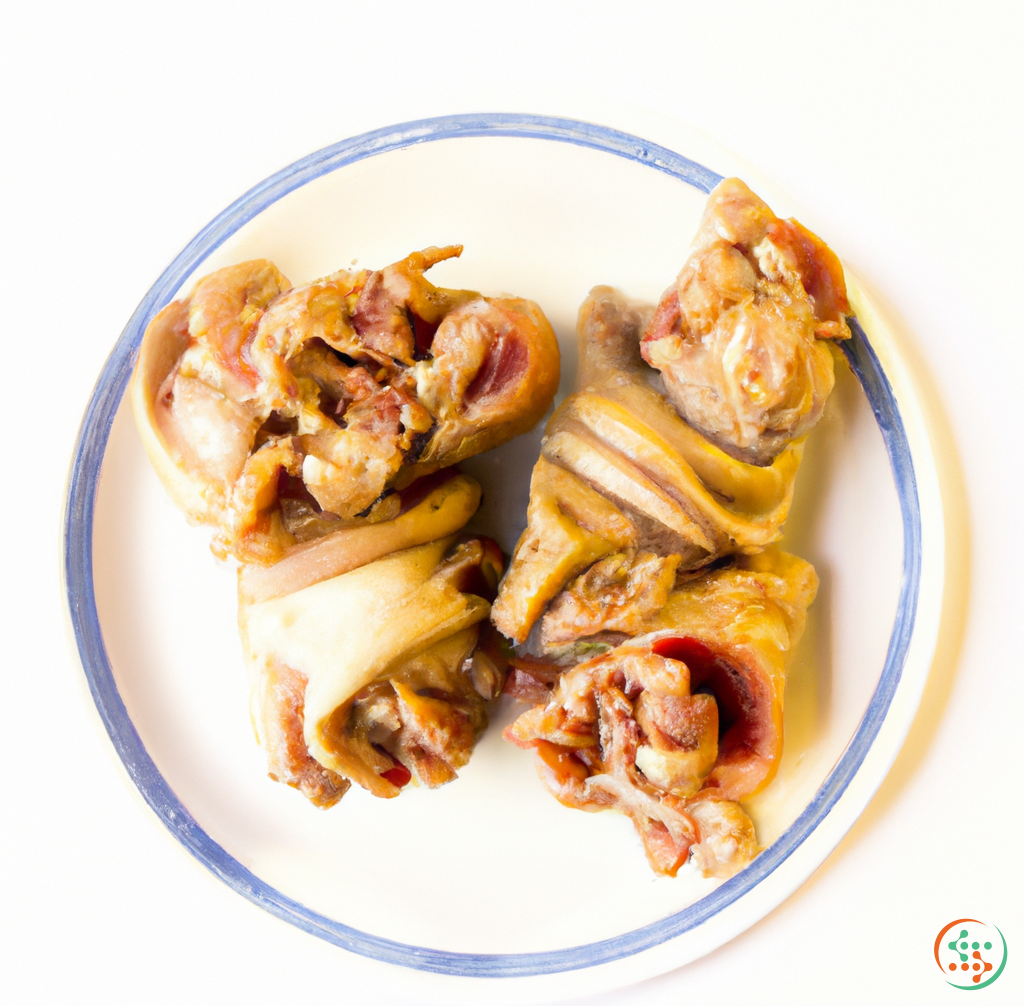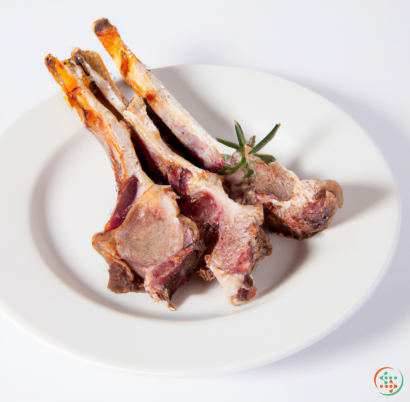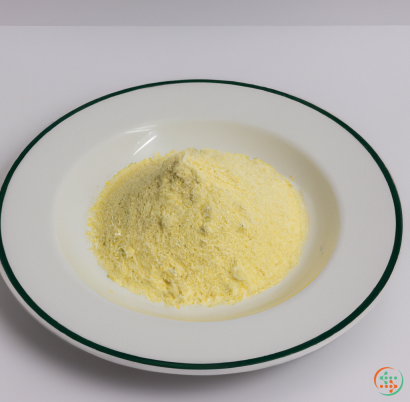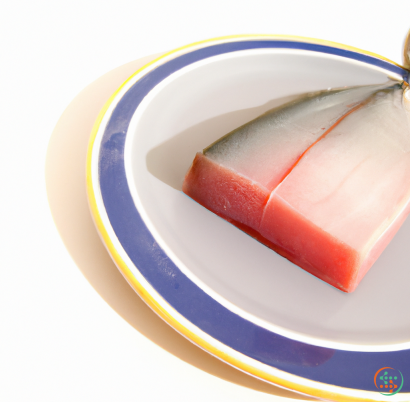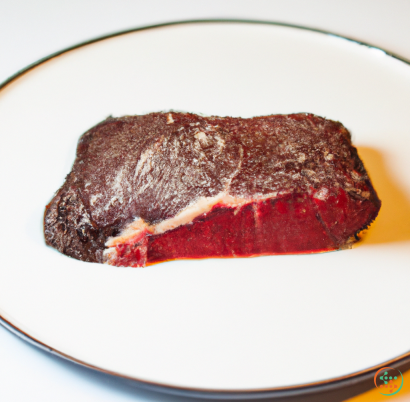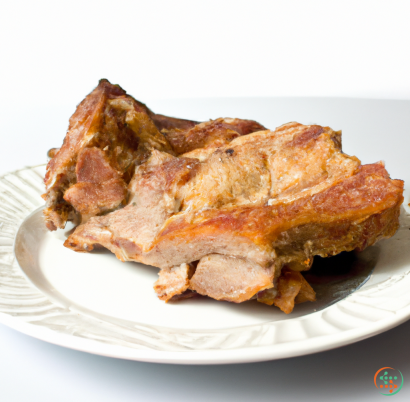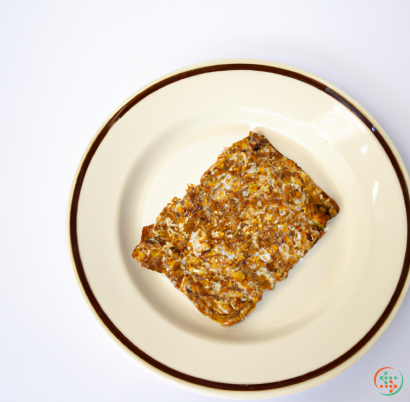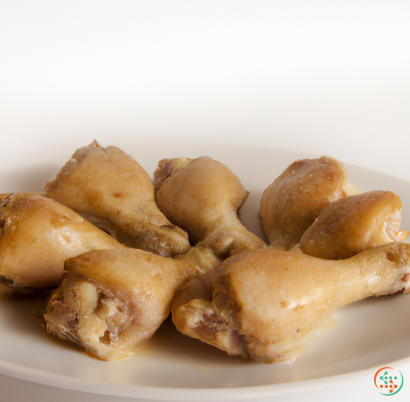Pig's Feet
If you’ve ever been to a gas station, you may have noticed that some stores stock a peculiar product – pig’s feet. These small, pinkish-gray balls of flesh may not look like much, but don’t let their humble appearance deceive you – pig’s feet are packed with delicious flavor, and have a variety of uses in cooking.
To understand why pig’s feet are such a valuable commodity, it’s important to know what they are and where they come from. Pigs’ feet are the feet of the pig, also known as trotters. The feet are usually split or chopped into four or five sections, depending on the size of the animal, and usually weigh around two pounds. Pig’s feet are usually sold either fresh, frozen or canned. The processed feet are usually cured and boiled beforehand, but this can vary according to the intended use.
In addition to being preserved, pig’s feet are often seasoned. This seasoning can help to bring out the natural flavors of the pig, as well as adding some interesting extra flavors. Common seasonings used for pig’s feet include bay leaves, garlic, onions, oregano, cilantro, pepper and turmeric.
Pig’s feet can be used in a variety of dishes, from stews to soups. Pig’s feet have a unique texture, similar to that of kidney, which can be pleasant when cooked slowly. They also have a lot of fat and collagen, so they add flavor and body to dishes, as well as helping them to maintain a moist texture.
Soups and stews are one of the most popular uses for pig’s feet. These dishes usually consist of pig’s feet simmered in a flavorful broth with vegetables such as carrots, celery, onions, tomatoes and potatoes. The broth can also include herbs, spices and even fruits like apples or apricots. The slow cooking provides time for the flavors to mix and mellow.
Pig’s feet can also be fried, which is a great way to introduce some crunch and crispness to the meat. When frying pigs’ feet, it’s important to make sure they’re cooked through. This can be achieved by frying them at a lower temperature for a longer period of time.
In many regions, pickled pig’s feet are a popular dish. To make pickled pig’s feet, pork feet are first cooked until tender. They’re then soaked in a brine solution of salt, pepper and other seasonings before being drained and allowed to cool. The cooled feet are then put into a jar and filled with a vinegar and spice solution, which helps to preserve the meat.
Pig’s feet are also a popular snack in some parts of the world, particularly in the Southern United States. The feet are usually boiled and then deep-fried. This gives them a crunchy exterior and soft, fatty interior. The feet can then be served as-is, drizzled with hot sauce, dipped in ketchup or even added as a topping to burgers, sandwiches and salads.
No matter how they’re prepared, pig’s feet are a delicious and nutritious snack or meal. They’re packed with protein, minerals and vitamins, so they’re a great way to add some extra nutrients to your diet. And with so many different ways of preparation, there’s no wrong way to enjoy these unique treats.
The topic of where our food comes from is often an interesting conversation to have, with many people having little idea of the process from farm to plate. If a person was to trace the origins of a pig’s foot, they might be surprised to learn that animal ingredients take almost as long a journey to the dinner table as most produce ingredients. To understand the story of a pig’s foot, it’s important to look at the animal’s life cycle, the processing and packaging methods, and the ways in which the feet make their way to the dinner table.
Starting at the beginning, a pig is born and raised in a commercial production facility, typically in barns or large steel pens. The animals are given a nutritious diet, which includes protein sources such as corn, soy, and grains. Pigs are social animals and need plenty of room to roam and interact with their peers, so the facilities must ensure that their animals are provided with the best environment possible.
Once pigs reach six months of age, they are often moved to a slaughterhouse. This is where the pig is killed, usually via stunning and slitting the throat. At this point, the body is hung on a rail while workers separate the different parts using a special cutting tool. These men and women are highly skilled, and the process of separating parts must occur quickly and precisely, so that the animal parts are not damaged. During this time, the feet are severed from the rest of the pig and sorted into separate containers.
After the feet have been cut from the pig, they are placed into a metal tank to be washed, disinfected, and cleaned. This helps to reduce bacteria and other agents that may be present in the meat. A large metal grinder then processes the feet into smaller pieces that are ready to be packaged. The feet are typically vacuum-packed and frozen, then placed into a chilled container for transport. This is done to keep the feet cold and fresh, so that they maintain the best taste and texture.
When it’s time to ship the feet, the containers are loaded onto a truck or train and sent to their destination. Depending on the location and demand, the feet may be sold frozen or fresh. If they are frozen, they will be stored in a large, refrigerated warehouse until it is time for them to make their way to a restaurant or store. In some cases, the feet will travel much farther, sometimes even crossing international borders.
Once the feet arrive at their destination, they are handpicked and purchased by restaurant chefs and storeowners. The process of selecting feet requires a keen eye, as chefs must ensure that the meat is of the highest quality and freshness. After selecting the desired feet, they are then thawed, cleaned, and prepared for cooking. Depending on the recipe, some chefs may choose to strip away the tougher skin of the feet before cooking, while others may opt to leave the skin on for added texture and flavour.
Finally, the feet can be cooked in a variety of ways, depending upon the dish. Some recipes involve stewing the meat in a broth, while others call for roasting it in an oven. In either case, the feet are cooked until they are tender and juicy. The cooked feet can then be plated and served. From the production facility to the dinner plate, the pig’s feet have gone through a long and sophisticated journey that showcases the work of farmers, processors, transporters, and chefs.
Whether one is eating the feet as part of a soup, a traditional Asian dish, or just as a snack, understanding the journey that led to its place on the dinner table can help to give new appreciation to the food we eat. Eating sustainably and responsibly is an important consideration when considering where our food comes from, and it’s worth keeping an eye on how our food is produced. Our understanding of the processes behind the production of items such as pig’s feet can help us to make more informed decisions about what ends up on our tables.
| Vitamin E | 0.09 mg | |
| Vitamin B1 | 0.02 mg | |
| Vitamin B2 | 0.06 mg | |
| Vitamin B3 | 0.59 mg | |
| Vitamin B4 | 0.0754 grams | |
| Vitamin B5 | 0.24 mg | |
| Vitamin B6 | 0.04 mg | |
| Vitamin B9 | 0.002 mg | |
| Vitamin B12 | 0.41 ug |
| Iron | 0.98 mg |
Daily Value 0.018 g
|
| Magnesium | 0.005 grams |
Daily Value 0.4 g
|
| Phosphorus | 0.082 grams |
Daily Value 1.25 g
|
| Potassium | 0.033 grams |
Daily Value 4.7 g
|
| Sodium | 0.073 grams |
Daily Value 2.3 g
|
| Zinc | 0.00105 grams |
Daily Value 0.011 g
|
| Copper | 0.06 mg |
Daily Value 0.9 mg
|
| Manganese | 0.02 mg |
Daily Value 0.0023 g
|
| Selenium | 0.023 mg |
Daily Value 0.055 mg
|
| Total Sugars | 0 ug |
per 100g
|
| Myristic acid (14:0) | 0.19 grams |
|
| Palmitic acid (16:0) | 3.02 grams |
|
| Stearic acid (18:0) | 1.09 grams |
|
| Total Saturated fatty acids: | 4.3 g | |
| Oleic acid (18:1) | 7.23 grams |
|
| Palmitoleic acid (16:1) | 0.61 grams |
|
| Gadoleic acid (20:1) | 0.16 grams |
|
| Total Monounsaturated fatty acids: | 8 g | |
| Omega-6 Eicosadienoic acid (20:2) | 0.08 grams |
|
| Omega-3 Alpha-linolenic acid (18:3) | 0.06 grams |
|
| Linolenic acid (18:3) | 0.06 grams |
|
| Linoleic acid (18:2) | 1.32 grams |
|
| Total Polyunsaturated fatty acids: | 1.52 g | |
| Cholesterol | 0.11 grams |
|
| Total Sterols: | 0.11 g | |
